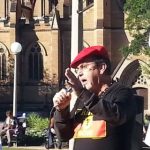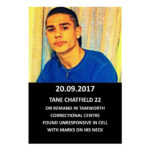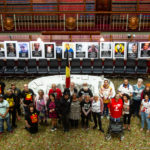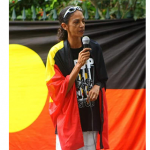Calls for a Parliamentary Inquiry Into TJ Hickey’s Death, Sixteen Years On
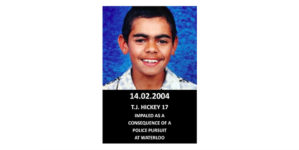
This Friday, 14 February 2020, marks sixteen years since Thomas (TJ) Hickey was thrown from his push bike and impaled upon on a fence in inner city Sydney, whilst being chased by two NSW police paddy wagons: Redfern 16 and 17.
In honouring his memory, the Hickey family have arranged a memorial march through the streets of Redfern on the day. And the event is also a demonstration, calling for a parliamentary inquiry into the teen’s death, as the findings of the inquest are full of holes.
In the moments proceeding the fatal incident, two police paddy wagons were patrolling Redfern and Waterloo, hunting for an unidentified offender, who’d recently robbed someone out the front of Redfern station, and they saw TJ riding his bike.
Down the line, there’s no suggestion that TJ was the actual thief. And the coroner found that Redfern 16 mounted a footpath and “followed” the boy down a pedestrian laneway, despite early claims of officers that they didn’t.
The 17-year-old Gomeroi boy died in hospital the following day. This sparked the Redfern Riots, which saw the local Aboriginal community vent its anger over the incident and numerous prior injustices. And it’s thought the fallout from the riot weighed heavily on the inquest findings.
A following, not a pursuit?
The Redfern Riots were on a scale not often seen in this country. Provoked by the understanding that TJ lost his life whilst under police pursuit, rioters hurled projectiles – bricks, fireworks and bottles – at Redfern police. Around 40 officers were injured and more than 25 people were arrested.
What emerged at the subsequent coronial inquest was TJ rode past Redfern 16 and then headed down Renwick Street, which ends in a cul-de-sac. But, there is a footpath that leads to Philip Street. The young man took this route, and so too did the NSW police paddy wagon.
At the end of the path was a gate with an opening for pedestrians, TJ flew through it with the police vehicle behind. That led the boy onto Philip Street, with Redfern 17 making its way down the road. And TJ took a path beside a residential building, where he was impaled.
There are differing accounts of these last moments. There are assertions that the back tyre of the bike was hit by a police vehicle, which threw TJ onto the fence. And the two officers in Redfern 16 neglected to mention they’d mounted the curb and drove down the path in their incident reports.
During the inquest that took place just months later, then NSW state coroner John Abernethy found that the constables in Redfern 16 – driver Michael Hollingsworth and Maree Reynolds – were following the boy down the path just moments before his death, but they weren’t pursuing him.
Abernethy labelled the death a “freak accident”. And the coroner did so against a political backdrop that had seen both NSW Labor premier Bob Carr and Australian prime minister John Howard publicly asserting that there was no evidence that a police pursuit had taken place.
A questionable distinction
“If you’ve got a person in a car going behind someone on a bike – if the car is going down the same road – then that’s pursuing,” Indigenous Social Justice Association (ISJA) secretary Raul Bassi told Sydney Criminal Lawyers.
“Two witnesses said they saw the car going behind TJ. Those witnesses were never called to the inquest,” added the long-term activist, who’s organising Friday’s memorial march, along with TJ’s mother Gail Hickey.
And there’s much contention over the distinction the inquest made between being followed and pursued.
Then NSW police commissioner Ken Moroney reportedly told the ABC that in layman’s terms there’s a very clear distinction between the way the words are used, but he didn’t seem to specify what that actually is.
Bassi also brought up questions around the way police handled proceedings after TJ became impaled on the fence. Instead of leaving him there so paramedics could remove him, they pulled him down. And when police rescue arrived – prior to the ambulance – they sent them away.
“They were not supposed to remove TJ from the impalement, because that’s a rule for those types of cases,” Mr Bassi made clear. “The only way they can be removed is by the ambulance or rescue. And in many cases, they don’t even remove them. They cut the spikes.”
Set up to fail
Recommendations 6 and 41 of the Royal Commission into Aboriginal deaths in custody provide a clear definition of what constitutes a custody death, which includes the death “of a person who dies or is fatally injured in the process of that person escaping… police custody”.
While NSW police protocols didn’t permit paddy wagons, like Redfern 16, to engage in pursuits.
Constable Hollingsworth refused to testify at the inquest on the grounds that he might incriminate himself. The coroner permitted this. Whilst his colleague, Ms Reynolds, stated “I don’t recall” so many times during the coronial hearings that it was remarked upon.
On delivering his findings, the coroner set out that it was difficult to assess what Redfern 16 did on the day, as Hollingsworth didn’t testify. However, it was Abernethy himself who excused the officer from appearing as a witness, as he couldn’t be confident that he’d be reliable.
The constable had previously given three contradictory statements regarding the incident.
An inquiry with teeth
“A parliamentary inquiry can call witnesses and they can’t refuse to give testimony,” Mr Bassi said. “The story that ‘I can get in trouble for what I say’, doesn’t apply in a parliamentary inquiry.”
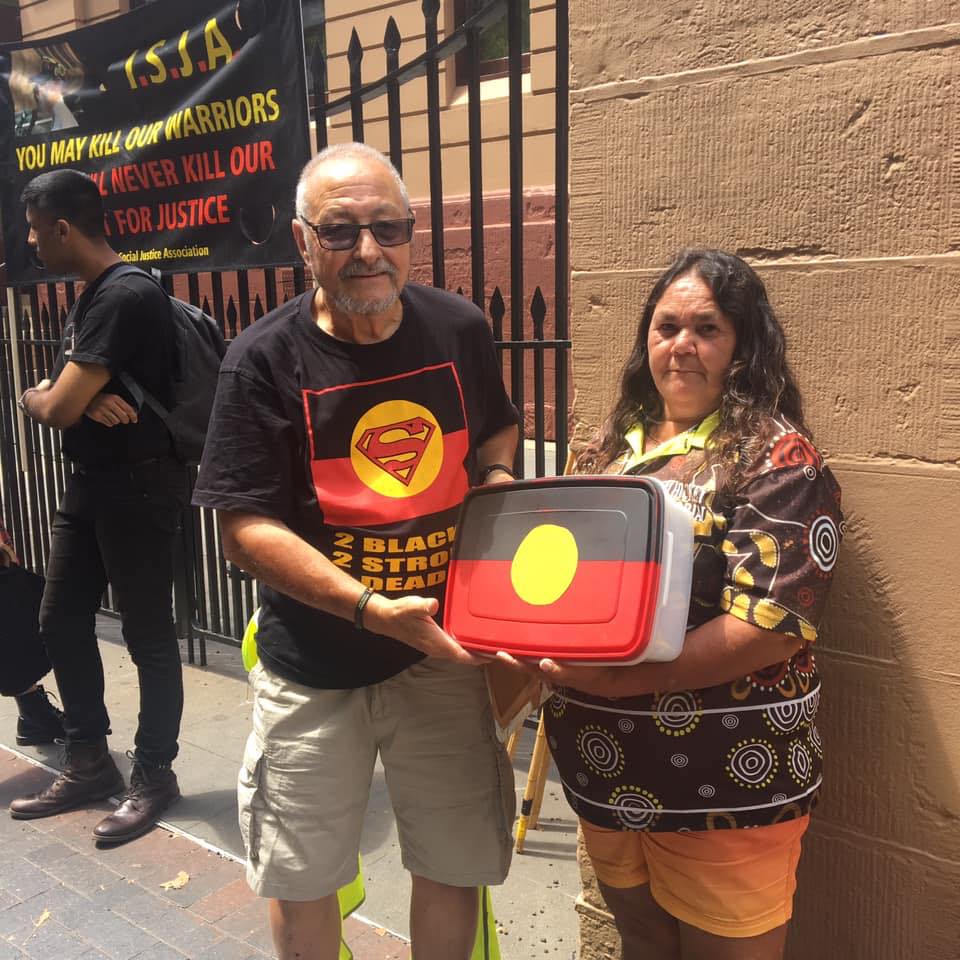
The activist explained that following the 2004 inquest, there were two further investigations carried out that weren’t open to the public. Both the 2014 and the 2018 inquiries resulted in the conclusions of the inquest being upheld.
ISJA and Fighting in Resistance Equally (FIRE) are running the Blak Deaths in Custody (BRIC) campaign. It’s pushing for changes to the way Aboriginal deaths in custody cases are handled by the coroner, so that incident’s like TJ’s death aren’t simply dismissed as “freak” accidents.
“We need a parliamentary inquiry to call on the officers, the ambulance paramedics and the police rescue person that were there,” Bassi concluded. “We don’t accept accident as a reason of death.”


